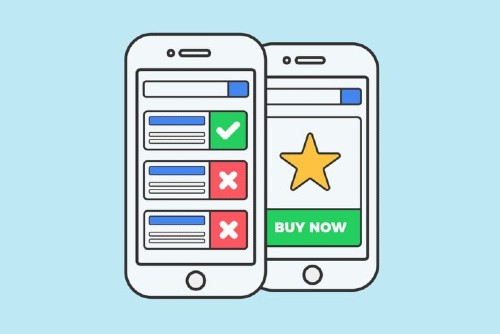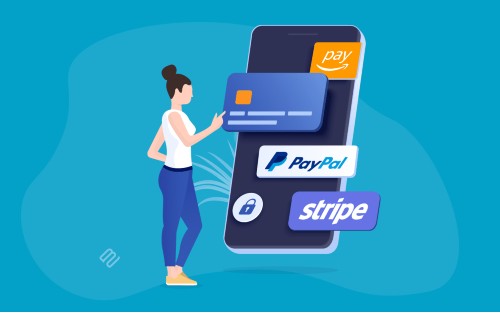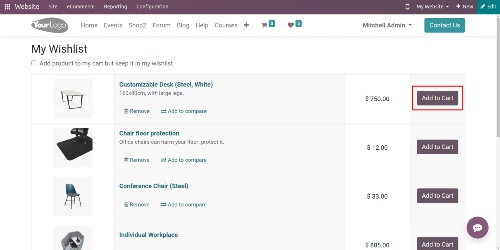20 Essential Features Every E-Commerce Website Should Have
|
Getting your Trinity Audio player ready...
|
In today’s fast-paced digital landscape, having an e-commerce website is essential for businesses looking to expand their reach and boost sales. However, merely having an online store isn’t enough.
To thrive in a competitive market, an e-commerce website must offer a seamless user experience, robust functionality, and security.
Below are the must-have features for every successful e-commerce website:
Table of Contents
Toggle1. User-Friendly Navigation

A well-structured website with intuitive navigation is crucial for retaining customers. Categories, subcategories, and a clear menu layout help users find products quickly.
A search bar with auto-suggestions can further improve usability. Studies show that 76% of consumers say ease of navigation is the most important factor in website usability.
Don’t Miss: How Much Does It Cost to Develop a Website in India? 2025 Pricing
2. Mobile Responsiveness

With a significant portion of users shopping via mobile devices, ensuring a responsive design is vital. Nearly 79% of smartphone users have shopped online using their mobile devices within the past six months.
Your website should be optimized for different screen sizes, offering a seamless experience across desktops, tablets, and smartphones.
3. High-Quality Product Images and Videos
Customers rely on visuals when making purchase decisions. High-resolution images, 360-degree views, and product demonstration videos can help in boosting conversions.
Research shows that 63% of consumers believe high-quality images are more important than product descriptions.
Don’t Miss: Why Every Business Needs a Website in 2025
4. Detailed Product Descriptions
A compelling product description should include features, specifications, and benefits. Use bullet points, storytelling, and customer-centric language to make descriptions more engaging and informative. 87% of shoppers rate product content as extremely or very important in their buying decision.
5. Secure Payment Gateways

Security is a top priority for online transactions. Integrating multiple secure payment options, including credit/debit cards, PayPal, digital wallets, and UPI, ensures a hassle-free checkout experience.
Implementing SSL certificates and PCI compliance further enhances security. Reports indicate that 18% of users abandon their carts due to security concerns.
6. Fast Loading Speed
A sluggish website increases bounce rates, and even a one-second delay in loading time can cause a 7% decline in conversions.
Optimize images, use caching techniques, and leverage a Content Delivery Network (CDN) to improve loading times. Google PageSpeed Insights can help analyze and enhance website performance.
7. Guest Checkout Option
Forcing users to create an account before making a purchase can lead to cart abandonment. A guest checkout option allows customers to complete their transactions quickly without unnecessary steps. 24% of shoppers abandon carts when required to create an account.
8. Shopping Cart and Wishlist

A well-designed shopping cart should allow easy modification of quantities, removal of products, and automatic price updates.
Adding a wishlist feature lets users save items for future purchases, enhancing the shopping experience. Studies show that 56% of online shoppers use wishlists for later purchases.
9. Order Tracking and Notifications
Customers appreciate real-time updates about their orders. Providing order tracking, email notifications, and SMS alerts ensures transparency and improves customer satisfaction. 83% of online shoppers expect regular updates about their orders.
10. Customer Reviews and Ratings

Social proof influences buying decisions. Displaying verified customer reviews and ratings on product pages builds trust and encourages new buyers to make purchases. Approximately 92% of consumers check online reviews before deciding to make a purchase.
11. AI-Powered Personalization

Using AI-driven recommendation engines to suggest products based on browsing history, purchase behavior, and preferences can significantly enhance the shopping experience and increase sales. AI-based recommendations account for 35% of Amazon’s revenue.
12. Strong Search Functionality
An advanced search feature with filters such as price range, brand, size, and category helps users find exactly what they are looking for quickly.
30% of e-commerce site visitors use the search bar, and those who do are twice as likely to convert.
13. Multiple Shipping Options
Offering flexible shipping options, including express delivery, standard shipping, and in-store pickup, caters to different customer preferences and enhances user satisfaction.
53% of shoppers consider delivery speed an important factor in their buying decision.
14. Secure Login and User Accounts

Allowing customers to create secure accounts with two-factor authentication (2FA) and social media login options can streamline the process while enhancing security. 81% of users prefer social login over traditional account creation.
15. Return and Refund Policy

A clear and customer-friendly return and refund policy builds confidence in buyers. Easy-to-understand terms and hassle-free return procedures help in fostering long-term customer relationships. 67% of shoppers check return policies before purchasing.
16. Live Chat Support

Providing real-time customer support through AI chatbots or live agents can help address queries instantly, leading to better user engagement and trust. 41% of consumers prefer live chat over email or phone support.
17. SEO Optimization
An SEO-friendly e-commerce website ranks higher in search engine results. Optimizing product pages with proper meta tags, alt text, structured data, and keyword-rich content is essential for driving organic traffic. Around 68% of online journeys start with a search engine.
18. Social Media Integration

Integrating social media sharing buttons, user-generated content, and direct shopping features from platforms like Instagram and Facebook can boost engagement and drive sales. 55% of online shoppers have bought a product through social media.
19. Subscription and Loyalty Programs
Offering loyalty points, rewards, and subscription models keeps customers engaged and encourages repeat purchases. About 75% of consumers prefer brands that provide rewards.
20. Analytics and Reporting
A robust analytics dashboard helps track user behavior, sales performance, and website metrics. Using tools like Google Analytics and heatmaps provides valuable insights for continuous improvement. 79% of companies that use analytics report better decision-making.
Fifth Shield
Fifth Shield is a leading website development company in Delhi, delivering high-quality, custom web solutions tailored to your business needs.
With 75% of users judging a company’s credibility based on its website design and 88% of online consumers less likely to return after a poor experience, we ensure visually stunning, responsive, and SEO-friendly websites.
Our expert developers have successfully built 400+ websites across various industries, boosting client engagement and conversions.
Fifth Shield provides cutting-edge, cost-effective solutions, whether you need a corporate site, an e-commerce store, or a web portal. Partner with us to build a strong digital presence!
Wrapping Up
An e-commerce website should be more than just an online store; it should be an engaging, user-friendly, and secure platform that enhances the customer experience.
By incorporating these essential features, businesses can maximize conversions, build trust, and stay ahead in the competitive digital marketplace.
Don’t Miss: How to Choose the Best Website Platform for Your Business







Write a Comment